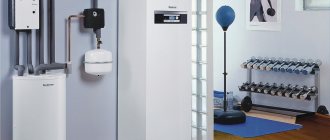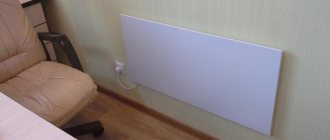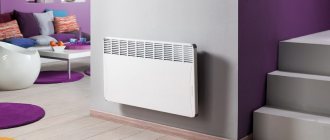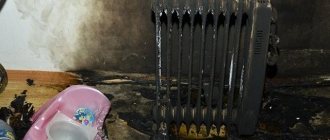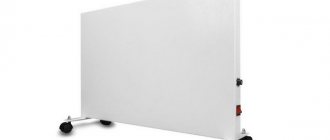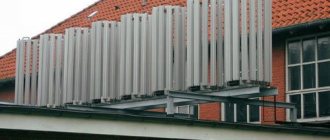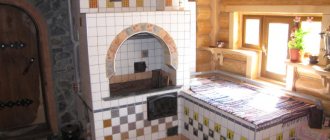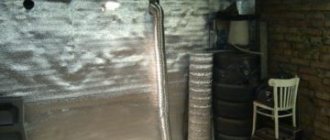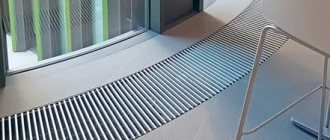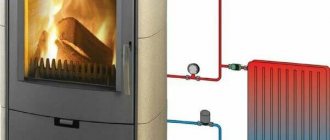Which heater is best for a summer house?
Every summer resident knows how important it is to quickly warm up a country house used for seasonal living or weekend relaxation. This is especially true in the spring, with the onset of summer frosts and with the approach of autumn cold weather. Sometimes it is convenient to use electric heaters for this purpose. You just need to make sure that the heater power matches the characteristics of your electrical network. It is the state of the electrical network that sometimes causes difficulties in organizing heating using electrical appliances.
In domestic conditions in the country, the following types of heaters are most often used:
- convector;
- infrared;
- oil
A separate class of heating devices called heat guns is not discussed in this article. They produce increased noise and are not intended for use in domestic environments. Weak fan heaters do not have such disadvantages, but have low power, which does not allow them to effectively warm up the premises of a country house.
Convector heaters
Electrical devices of this type have a heating element that heats up to a high temperature, which gives off heat to air flows rising along its walls. When such a device operates, a fairly intense circulation of air masses occurs, which leads to rapid heating of the room.
Operating principle of a convector heater
The required heater power is selected based on a simple formula: 1 kW for every 10 m2 of area of the heated room. The lineup of any well-known brand is usually represented by products of very different performance. The system of settings and regulation allows you to adapt the operation of the heater to specific conditions.
Manufacturers offer convector heaters of various shapes and sizes. There are options for floor or wall installation. Modern models are equipped with automatic means that can maintain the temperature with an accuracy of a degree, provide a comfortable or economical operating mode, and turn on and off in accordance with a given program at a time specified by the user.
The safe operation of convector heaters is ensured by a special housing design that protects electrical equipment from water ingress, protection against overheating and blocking when tipping over.
+ Advantages of convector heaters
- High rate of room heating.
- Economical operation.
- Fire safety.
- No noise or emission of harmful substances.
- Easy installation and intuitive controls.
- The presence of several operating modes with precise maintenance of the set air temperature provided for a number of models.
- Possibility of not only permanent installation, but also movement around the house.
- There is no need for maintenance, just periodically wipe the dust from the outer surface of the case.
— Disadvantages of convector heaters
- Increased requirements for the reliability of electrical wiring.
- High tariffs for electricity consumption.
Features of application for a summer residence. When choosing convectors for a country house, you must take into account that one convector is designed to heat one room. If you need to heat several rooms, you will have to purchase a convector for each. For ease of use, convectors located in different rooms can be combined into one system with one control unit. This allows you to quickly and accurately regulate the temperature throughout your entire home.
Infrared heaters
This type of heating devices is based on the generation of heat rays. They are absolutely safe and are capable of heating surfaces at some distance from the source. In a similar way, the sun gives us its energy. In the area of operation of such a heater, a person feels as comfortable as possible.
The operating principle of an infrared heater
Infrared heaters can be attached to walls and ceilings. They are most effective when it is not necessary to heat the entire room, but only a certain area of it. They usually have an increased class of protection against moisture, which allows them to be used even in open areas, in showers and bathrooms. Most models of this type are designed for permanent installation. For the convenience of users, manufacturers often provide rotating devices that allow the heating area to be shifted.
+ Advantages of infrared heaters
- Long service life ensured by high reliability of the design and materials used.
- Fire safety.
- Possibility of use outside buildings and in rooms with high humidity.
- Ease of connection and setup.
- Possibility of centralized control of several devices.
- Complete replacement of heated floors.
- Maximum efficiency with spot and zone heating.
— Disadvantages of infrared heaters
- Only permanent installation is provided.
- There are restrictions on minimum and maximum ceiling heights.
- Low degree of control intelligence.
- There is a risk of overheating during prolonged use.
Features of application for a summer residence. All infrared heaters differ in the areas of infrared radiation.
Based on the impact on humans, the following areas of infrared radiation (IR-Infrared Radiation) are distinguished:
- Near (IR-A). Wavelengths from 0.76 to 1.5 microns, penetrate deeply under the skin (up to 4 cm);
- Average (IR-B). Wavelength from 1.5 to 3 microns, medium penetration;
- Far (IR-C). Wavelengths from 3 to 8 microns do not pass beyond the surface.
The human body perceives long-wave radiation best - (IR-C). But short-wave radiation (IR-A), with prolonged and intense exposure to the human body, can lead to negative consequences in the form of headaches or heat stroke. Since for your dacha you most likely need devices that you will use for a long time, you need to choose infrared heaters with long-wave radiation (IR-C).
You can understand which heater you have in front of you based on the type of heating element. The more short waves in the spectrum, the higher the temperature and the brighter the glow of the heating element. And vice versa, the more long waves in the spectrum, the lower the temperature, and the glow may be completely absent.
- Anodized aluminum panel heating elements - contain 98% of the IR-C spectrum.
- Quartz heating elements - contain 84% of the IR-C spectrum and 15% of the IR-B spectrum 15%.
- Carbon heating elements - contain 70% IR-C spectrum and 15 IR-B spectrum 29%.
- Halogen heating elements - contain 35% of the IR-A spectrum.
Thus, the most optimal option for human exposure is panel-type IR heaters, and it is advisable to use these devices to heat the premises of a country house. Panel IR heaters can be wall or ceiling mounted. As with convectors, you will need your own heater for each room. In this case, each heater must be located in such a place as to maximize the dispersion of infrared rays throughout the room.
Oil heaters
Such devices are an oil-filled metal case with embossed walls, inside of which a heating element is mounted. When it is turned on, the oil is first heated, which then gives off heat to the surrounding air. This design eliminates contact of external objects and people with hot surfaces.
The oil heater remains warm for some time after being turned off. This is not always convenient, as it leads to unreasonably high energy consumption. Heaters of this type are usually heavy, but are mounted on casters, making them easy to move around the house.
+ Advantages of oil heaters
- Duration of operation.
- Mobility.
- Simple and reliable control.
- Affordable price.
— Disadvantages of oil heaters
- Increased room warm-up time compared to other types of electrical appliances of similar power.
- Cracking during operation.
- No intelligent control.
- Impossibility of combining several devices into a single system.
- Large mass and excessive dimensions.
- Negative effect on indoor air humidity.
- The need for preheating when first turned on.
- Excessive waste of energy, since the device continues to produce heat even after it is turned off.
Features of application for a summer residence. Oil heaters are purchased for summer cottages when the priority factor of choice is the cheapness of the purchase and they are used as a temporary heating option using electricity. During operation, they are inferior in efficiency and ease of use. For the rest, we recommend paying attention to convectors or infrared heaters.
What to look for when choosing?
- The most important part of the convector is the heating element. It is wiser to give preference to a monoblock design, the lifespan of which is 10–25 years.
- Electrical wires going to the heating element should not pass through the heating zone and bend over the edge of the metal sheet.
- The power button, located at the bottom of the case, is not very convenient; it is better if it is at the top, then you don’t have to bend down to control the device. The same goes for the thermostat.
- The thickness of the walls plays an important role - the thicker it is, the less the risk of damaging the heater in case of an accidental impact.
- Finally, it is useful to pay attention to the design of the brackets with which the device is fixed to the wall. Some models have movable fasteners, allowing you to easily remove them if necessary or tilt them away from the wall if you need to wash the back panel.
Read more in the material “Fast Heat”.
2
The most accessible and cheapest type of fuel
The most expensive fuel is electricity. But its use has many advantages. There are no additional labor costs, no exhaust gas removal required. At the same time, the summer resident depends on the stability of the electrical system.
Mains gas is preferable in terms of operating costs. But its supply costs a lot of money. And the equipment is not cheap.
The use of liquefied gas in cylinders has a significant drawback. For cylinders it is necessary to make a special box outdoors, which makes operation difficult. And with constant use, it quickly ends. You will have to constantly travel and refill cylinders.
The use of solid fuel significantly reduces operating costs if the cottage is located near a forest and firewood can be taken there. Moreover, on every site there are bushes and trees that need to be pruned or removed every year.
We can conclude that the cheapest type of fuel is firewood
. Provided that you can prepare them yourself. The cost of purchasing imported raw materials is comparable to liquefied gas.
Mains gas is cheaper, but many SNTs do not have it. The most expensive energy carrier is electricity
. However, in villages it is not always stable.
Method 6 - electrode boiler
Inside the electrode boiler there are electrodes, which act as a heating element. When current passes through a liquid, heat is generated. This means that in electrode boilers there is no actual heating element on which scale could form. The absence of scale will greatly facilitate operation.
Electrode boilers are highly reliable and operate much longer than tubular heaters. In addition, they are small in size, which is very convenient for a small residential building. The disadvantages include high requirements for the liquid used as a coolant. Water must undergo special treatment. Often, antifreeze generally must be exclusive - from the device developer.
The photo shows an electrode boiler Galan, Russia
Method 2 - tubular electric heaters
They transfer heat from a tubular electric heater to a liquid-based coolant. Typically, water and oil are used as a coolant, and sometimes antifreeze. The design principle of heaters is the same as that of electric kettles, which is why they are also called heaters and oil radiators. In fact, it is a boiler placed in a vessel with water. The efficiency of such devices is quite high, and heat loss for heating is minimal.
pros
- The undoubted advantages of tubular heaters include their safety, operational reliability and versatility of use.
- Can be used in both gaseous and liquid media.
- Not explosive, and not afraid of vibrations and shocks.
- Tubular heaters are available in a variety of design solutions, which allows you to economically heat a private home with electricity without disturbing the aesthetics of the interior.
Minuses
Heating heating elements have a high cost due to the expensive metals that are used in production. Since scale forms on the pipes, it is necessary to take care of the quality of the water.
A tubular radiator is a thin-walled metal tube with a spiral inside, so if you do not need particularly high temperatures, then you need to take a heater with carbon steel tubes. If the device must produce a consistently high temperature or operate in an aggressive environment, then you need to take a device made of stainless steel.
The photo shows a tubular electric heater made by yourself
Presence time
When making the final choice of heating system, you should take into account the frequency and duration of stay at the dacha. If you plan to be away for a long time, water heating is only suitable if antifreeze is added. Some, as a way out, drain the water during this time.
It is advisable to heat the cottage in winter in a constant mode. The fact is that warm air contains excess moisture. When the temperature drops to a certain value, this moisture falls on the walls and furniture in the form of frost. Further, as the temperature rises, it melts again, causing damage to furniture and the spread of fungus on the walls. This problem can be eliminated by thoroughly ventilating the dacha before leaving. Dry air from the street will quickly fill the room and prepare it for conservation.
Constant heating without presence can be organized either with electricity or using a non-volatile gas convector. Electric heating can be programmed for a certain period, or controlled remotely by means of communication. The possibility of power outages must be taken into account. As for gas, you need to change gas cylinders on a schedule.
Method 5 - induction boiler
An induction boiler is a transformer with two types of winding. The resulting eddy currents follow the short-circuited loop, which is the boiler body. The secondary winding receives energy, which is converted into heat, heating the coolant.
Induction boilers heat your home quickly, can operate at low voltage, and have no parts that can fail. The efficiency of such a boiler is almost 100% and does not depend on the service life.
The photo shows an induction boiler EPO Evan 9.5 kW, Russia
Conclusion
Calculate everything carefully: the area of the room, average temperatures, the availability of gas and solid fuel, the number of days a year when you stay in a country house.
Whatever your heating choice, good building insulation will keep the inside of the house warm. Consider using several heating methods at the same time: this will protect you from unforeseen situations. Do not neglect regular inspections of equipment in order to increase its service life and personal safety.
Types of heating systems for country houses
The types of heating systems may depend on the available energy resource, design features, climatic conditions, and the budget of the dacha owner.
The main types of space heating are:
- gas heaters;
- electric heaters;
- furnace equipment;
- equipment operating on liquid fuel resources;
- equipment operating on solid fuel resources;
- universal heating systems.
Choosing each type of heating requires drawing up a cost budget, taking into account the area of the building that needs heating. The choice of heat supply method will determine how to maintain a positive temperature when you are away from your summer cottage.
Note! In winter, the entire house may not need a heating system. Without heating, you can leave the attic, veranda, dressing room or other rooms that are rarely visited during the cold season.
Increase equipment efficiency and reduce bottom line costs
For autonomous heating of suburban real estate, steam heating is increasingly being chosen. This option is the most affordable and reliable. Boilers with a water circuit can be equipped with multifunctional automation, which will control the operating process of the system.
It is necessary to try to draw up an economical heating project, selecting the power of the equipment and the location for installing radiators. A multi-tariff meter will help save the family budget. If you install water heating yourself, you can save on paying for specialist services.
Using a reliable solid fuel boiler at home
Gas heating
Gas heating of a dacha is a complex engineering system. Before installing expensive equipment, you need to ensure good thermal insulation. An ideal system should operate silently, economically, warmly, and unnoticeably. Gas equipment requires constant maintenance and preparation for the winter season. Maintenance must be carried out by certified specialists.
A water system is best suited for gas heating. If the system will not be filled in winter, the pipes must be filled with antifreeze. This nuance will protect the system from defrosting. Installation of gas equipment includes the installation of radiators that will give off their heat to the room. Installation of a heating system has its own characteristics, which a specialist must warn about.
How does infrared film work?
Infrared film is one of the alternative methods of heating a room. It accumulates heat rays and releases them out. The specifics of its action can be compared to how the sun heats the asphalt in summer. If you have an electric heating system installed at your dacha, use infrared film. It will help save more than 20% of heat, and you will not need electric heaters.
IR film has the following characteristics:
- operates on a 220 volt network;
- peak power consumption – 210 W/m²;
- daily electricity consumption – from 20 to 60 W/m²;
- maximum heating temperature – 55©;
- width – from 0.5 to 1 m.
The film is heated within 5-7 minutes. It can be quickly installed anywhere without worrying about the height of the ceilings. During operation, avoid contact of the film with sharp and cutting objects.
Metal stoves
The efficiency of a metal furnace depends on the density of the fuel. There should be no free space between solid elements. Firewood inside a metal stove must be placed in a cage. The denser the filling, the longer it will burn, providing heat to the entire room. When properly stacked with firewood, a metal stove retains heat for 24 hours.
As wood smolders, it releases heat energy, and the stove has a special compartment for air supply. The characteristics of the metal affect heat transfer and thermal conductivity. Despite the weak accumulation of heat, the thermal conductivity of the metal is high. This stove produces heat efficiently, is compact, and can be installed anywhere. Cast iron stoves are reliable and last longer than products made from other materials.
Advice! You can buy a stove of an unusual shape to decorate your country house setting.
Metal stoves are not installed in large houses, because they will not provide a comfortable temperature in a building with a large area. Their safety level is lower than that of stone or brick products, but they are quite suitable for a small dacha. You need to follow safety precautions and stack firewood correctly.
Method 4 - electric boiler with heating element
The popularity of electric boilers is determined by their safety, low cost and reliability. Most consumers opt for heating element boilers - they are much cheaper than electrode and induction boilers, and they are easy to maintain.
However, due to the use of a thermoelectric heater (TEH), such heating cannot be called the most economical. In addition, before purchasing, I recommend checking the operating mode of the local electrical networks - perhaps the networks will not cope with the load you need and the purchase will be in vain.
The photo shows an electric boiler KOSPEL, Poland
Reliable solid fuel units
The cottage can be heated without gas. In this case, you will need firewood, coal, briquettes, shavings, pallets, straw, sawdust or peat. Solid fuel boilers are gaining popularity as other sources of thermal energy periodically become more expensive. The units operate stably only in conjunction with a water coolant delivery system in all rooms of the dacha.
Heating a living space with a solid fuel system is beneficial, since the equipment is affordable, reliable, and easy to maintain.
Affordable solid fuel boiler
